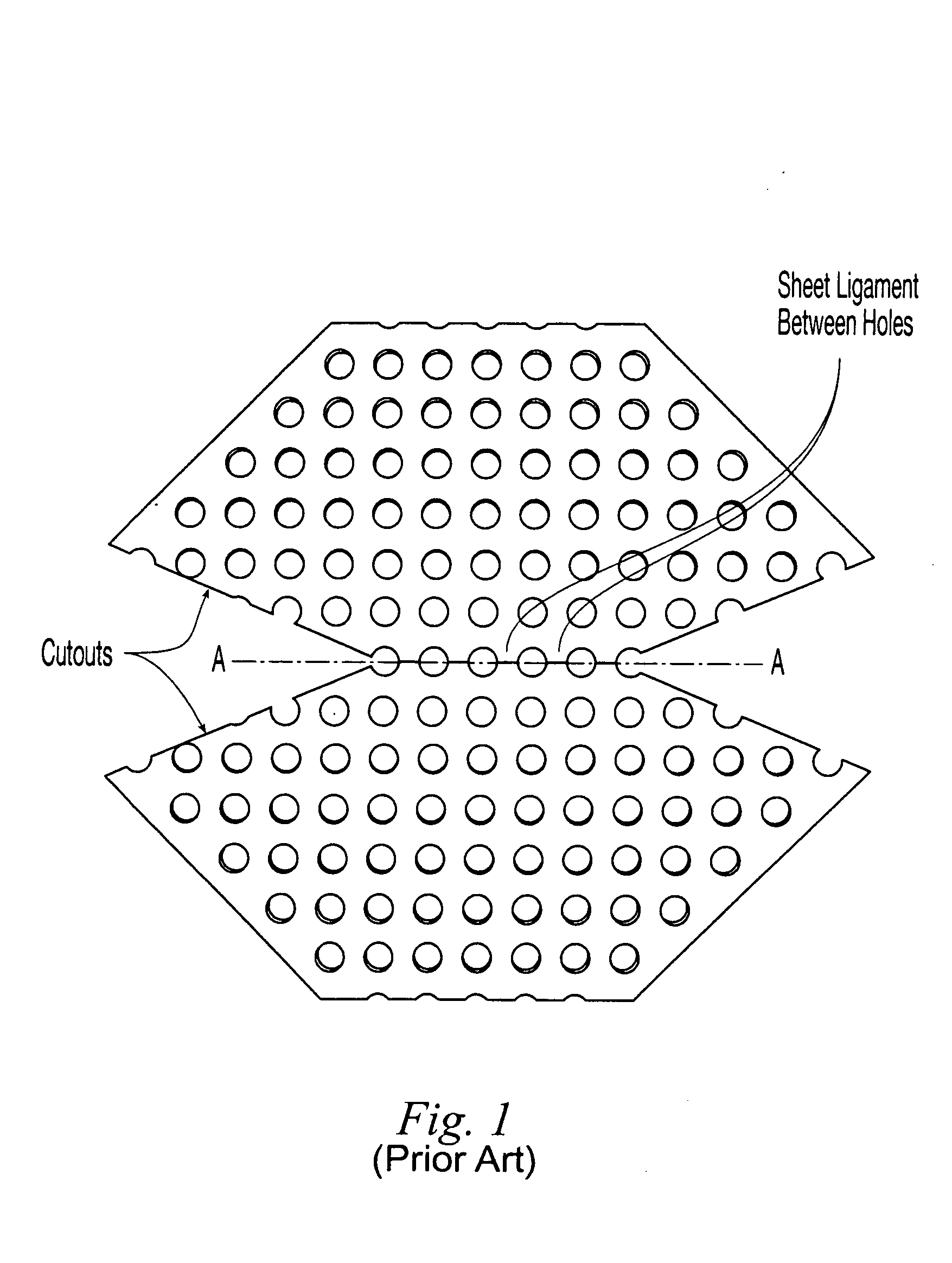Resorbable surgical fixation device
a surgical fixation device and resorbable technology, applied in the field of resorbable surgical fixation devices, can solve the problems of difficult three-dimensional contouring to irregular or intricate parts of skeletal anatomy, limited flexibility of perforated sheet meshes, and limited three-dimensional contourability, and achieve the effect of smooth curved
- Summary
- Abstract
- Description
- Claims
- Application Information
AI Technical Summary
Benefits of technology
Problems solved by technology
Method used
Image
Examples
Embodiment Construction
[0041] The description of preferred embodiments which follows is merely exemplary in nature and not intended to limit in any way the scope of the invention, its application, or uses.
[0042] The meshes of the present invention may be made from any suitable polymer. Preferably the meshes will be formed of resorbable (i.e., biodegradable and bioabsorbable) material that will eventually dissolve and be absorbed in vivo following implantation. For example, the mesh may be made from, but is not limited to, various polymers and combinations of two or more polymers to create varying copolymers, terpolymers, etc., polymer alloys and composites, polymers containing polymeric fibers of the same or different type of polymer, etc. The selection of material and individual or combinations of various polymers, methods used to manufacture the polymers and meshes, and other factors affect the functional properties of the resorbable implants, such as how long structural strength and dimensional stabil...
PUM
 Login to View More
Login to View More Abstract
Description
Claims
Application Information
 Login to View More
Login to View More - R&D
- Intellectual Property
- Life Sciences
- Materials
- Tech Scout
- Unparalleled Data Quality
- Higher Quality Content
- 60% Fewer Hallucinations
Browse by: Latest US Patents, China's latest patents, Technical Efficacy Thesaurus, Application Domain, Technology Topic, Popular Technical Reports.
© 2025 PatSnap. All rights reserved.Legal|Privacy policy|Modern Slavery Act Transparency Statement|Sitemap|About US| Contact US: help@patsnap.com



